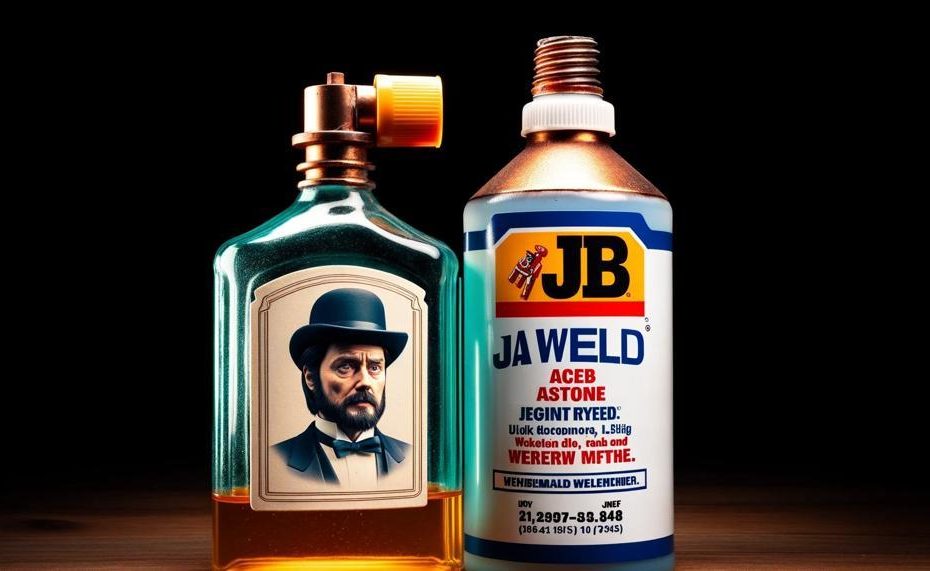JB Weld is a go-to choice for many construction and repair operations because of its well-known strong bonding qualities. But sometimes, for whatever reason—a mistake, a change in our plans—we have to sever this link. Herein lies the use of acetone, a solvent well-known for its capacity to dissolve a variety of substances.
This article will go further into the chemistry of JB Weld and acetone, elucidating the principles that govern their interaction. Our goal is for you to have a clear knowledge of whether acetone can remove JB Weld and in what situations it can or cannot.
So, will acetone remove jb weld?
Even if JB Weld has completely dried, acetone may still remove it off hands and most surfaces. Though acetone-based solutions may dissolve much of it, JB Weld is an insulator. If the JB Weld is hard, you may try soaking it in acetone for four days to make it pliable enough to remove. Acetone, on the other hand, will disintegrate paint, rubber, and soft plastic.
Cutting and scraping, using an angle grinder and flap sander wheel, grinding or filing, heating the product to 600°F, and exposing it to acetic acid (vinegar) are other methods for removing JB Weld from concrete.
Let’s get started.
Contents
How to Remove JB Weld Properly
To remove JB Weld effectively with acetone, follow these precise steps to ensure safety and effectiveness. This method hinges on the solvent properties of acetone to break down the adhesive qualities of JB Weld without harming the underlying materials.
Preparation and Safety Measures:
- Gloves: Wear chemical-resistant gloves to protect your skin.
- Mask or Respirator: Use to avoid inhaling toxic fumes.
- Glasses: Protect your eyes from splashes.
Application Process:
| Step | Action | Details |
| 1 | Surface Testing | Apply acetone to a hidden area to check for any adverse reaction on the material beneath. |
| 2 | Apply Acetone | Saturate the JB Weld thoroughly with acetone. Use a brush or cloth to apply liberally. |
| 3 | Wait | Allow the acetone to penetrate and soften the JB Weld for about 15 minutes. |
| 4 | Removal | Wipe the softened adhesive with a tack cloth. For persistent residue, reapply acetone on a cloth and rub off. |
Environmental and Safety Precautions:
- Toxic Fumes: Acetone emits harmful vapours; thus, adequate ventilation and respiratory protection are paramount.
- Skin and Eye Protection: Prevent skin contact and eye exposure by wearing appropriate safety gear.
This approach balances effectiveness with safety, ensuring JB Weld removal without damage to the underlying surfaces or health risks to the user.
How to Remove JB Weld from Skin
To remove JB Weld from skin with acetone, you’ll want to handle the process with care, given acetone’s strong nature. Here’s a simple, step-by-step guide:
Safety First
- Ventilation: Ensure the area is well-ventilated to avoid inhaling acetone fumes.
- Protective Gear: Consider wearing gloves on the hand not affected by JB Weld to prevent further skin contact with acetone.
Acetone Application
- Test Patch: Apply a small amount of acetone on a less sensitive area of your skin to test for any adverse reaction.
- Apply Acetone: Soak a cotton ball or soft cloth in acetone.
- Gentle Rubbing: Dab the affected area gently. Let the acetone sit for a minute to break down the JB Weld.
Removal Process
- Wiping Away: Use a clean cloth to gently wipe away the softened JB Weld. Repeat if necessary, using fresh acetone-soaked cotton balls.
- Wash Thoroughly: Once the JB Weld is removed, wash the area with mild soap and warm water to remove any residue of JB Weld or acetone.
Aftercare
- Moisturize: Apply a skin moisturizer to the area to prevent dryness caused by acetone.
Table of Supplies and Steps
| Supplies | Steps | Precautions |
| Acetone | Test Patch | Ensure ventilation |
| Cotton Ball/Soft Cloth | Apply Acetone | Wear protective gloves |
| Mild Soap | Wash Thoroughly | Avoid prolonged exposure |
| Moisturizer | Moisturize | Check for skin reactions |
How to Remove JB Weld Metal Surfaces

To effectively rid metal surfaces of JB Weld using acetone, follow these guided steps, ensuring safety and efficiency. Acetone acts as a potent solvent to weaken and dissolve JB Weld, especially before it fully cures. Here’s how you can do it:
Safety Precautions
- Wear Protective Gear: Don gloves and safety goggles to shield your skin and eyes from acetone splashes.
- Ensure Ventilation: Work in a well-ventilated area to avoid inhaling harmful fumes.
Acetone Application Method
Test Surface: Apply a small amount of acetone on a discreet area to check for any adverse reactions.
Apply Acetone: Soak a cloth or cotton ball in acetone and place it over the JB Weld. Let it sit to soften the adhesive.
Wipe Off: After a few minutes, wipe or gently scrub the area to remove the softened JB Weld.
Additional Tips
- Repeat if Necessary: For tougher spots, repeat the application process until the JB Weld is fully removed.
- Clean the Surface: After removal, cleanse the area with soap and water to eliminate any residue.
| Safety Equipment | Gloves, Safety Goggles | Protects from chemical burns and fumes |
| Method | Soak, Sit, Scrub | Efficiently softens and removes JB Weld |
| Aftercare | Clean with Soap and Water | Removes residue, restoring the metal’s surface |
How to Remove JB Weld Metal Surfaces
To tackle the task of removing JB Weld from metal surfaces using acetone, follow these succinct steps. It’s a straightforward process, but remember, safety first. Equip yourself with protective gear, including gloves and goggles, to shield against any potential hazards.
Acetone’s potency is both a blessing and a challenge, capable of dissolving stubborn adhesives yet demanding respect and caution in its application.
| Step | Action | Detail |
| 1 | Prep Your Gear | Kit yourself out with gloves, a respirator or mask, and protective eyewear. |
| 2 | Spot Test | Choose an inconspicuous spot to ensure acetone won’t mar your metal. |
| 3 | Apply Acetone | Douse a cloth in acetone and thoroughly saturate the JB Weld area. |
| 4 | Patience is Key | Allow the acetone 15 minutes to work its magic, softening the adhesive. |
| 5 | Clean Up | Use a tack cloth to gently remove the now-pliable adhesive. |
| 6 | Repeat if Necessary | Stubborn spots may require another round of acetone application and cleaning. |
| 7 | Dispose with Care | Ensure all used materials are disposed of responsibly. |
Conclusion
In conclusion, trying to get rid of JB Weld—a mainstay in the adhesives industry—often takes one down a dubious route. This investigation on acetone’s effectiveness as a solvent shows promise. Acetone’s chemical makeup gives it the strength to dissolve the strong connections in JB Weld without destroying the integrity of the components underneath.
Whether the work at hand includes metal surfaces, inadvertent skin contact, or other materials, this tutorial has shed light on the painstaking processes required for safe and successful removal.
Now that you know how to apply, prepare, and take precautions, you can strike the right balance between prudence and potency. Despite being a strong ally, acetone should be used with caution due to its potency and possible risks. The cornerstones of this endeavor’s success are patient application, safety clothing, and ventilation.
As we navigate the complexities of solvent chemistry and useful application hints, keep in mind that your most useful weapon is knowledge. Knowing that acetone is a solvent gives you hope when you need it to correct mistakes or change the direction of a project.





